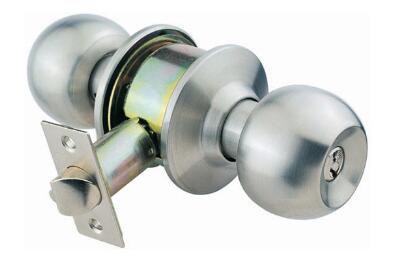Jul. 10, 2023
Hardware
The cylindrical door lock is a common and popular choice for residential and commercial properties, offering a combination of security, durability, and convenience. In this article, we will explore the features and benefits of cylindrical door locks, their components, and why they are considered a reliable solution for safeguarding entrances. From their robust construction and keying options to their ease of installation and operation, cylindrical door locks provide peace of mind and protection for homes and businesses.

When it comes to securing entrances, a reliable door lock is of utmost importance. Cylindrical door locks have emerged as a popular choice for both residential and commercial applications, providing a balance of security, durability, and convenience. In this article, we will explore the world of cylindrical door locks, their advantages, components, and how to choose the right lock for your specific needs.
Cylindrical locks are named after their cylindrical shape and are commonly found on interior and exterior doors. They consist of a lockset that is installed within the door and operates with a key or thumbturn mechanism. Cylindrical locks are versatile and can be used with both knobs and levers, offering flexibility in design and functionality.
Cylindrical door locks are designed to provide reliable security for homes and businesses. They feature a robust construction that resists tampering and forced entry attempts. The cylindrical lockset is typically made from durable materials such as brass or steel, ensuring long-lasting performance and protection.
Cylindrical door locks offer versatile keying options to meet specific security requirements. They can be keyed alike, allowing multiple locks to be operated with a single key. Keyed different options provide individual keys for each lock, ideal for residential properties or offices with separate access restrictions. Additionally, master key systems can be implemented, enabling authorized personnel to access multiple areas while maintaining individual lock security.
One of the advantages of cylindrical door locks is their ease of installation. They are designed to fit standard door preparations, making the installation process straightforward for homeowners, contractors, and locksmiths. Cylindrical locks are compatible with most standard doors, allowing for hassle-free replacement or upgrade of existing locks.
Cylindrical door locks are known for their smooth operation and convenience. They offer simple locking and unlocking mechanisms, making them user-friendly for individuals of all ages. The use of knobs or levers provides ergonomic and comfortable operation, particularly important for people with limited dexterity or mobility. Cylindrical locks are designed for frequent use, ensuring reliable and hassle-free access to secured areas.
Cylindrical door locks consist of several key components that work together to provide security and functionality. Let's explore the main components of a typical cylindrical door lock:
The latchbolt is the part of the lock that extends into the door frame, keeping the door securely closed when in the locked position. When the door is closed, the latchbolt automatically extends into the strike plate on the door frame, preventing the door from being opened without the use of a key or thumbturn.
Some cylindrical door locks may feature an additional deadbolt for enhanced security. The deadbolt is a heavy-duty bolt that is manually operated using a key or thumbturn. When engaged, the deadbolt extends deeper into the strike plate, providing an extra layer of protection against forced entry.
The cylinder is the component that houses the locking mechanism and accepts the key or thumbturn. It consists of a plug and a series of pins or tumblers that align when the correct key is inserted, allowing the cylinder to rotate and operate the lock. The quality and precision of the cylinder greatly affect the lock's overall security and smooth operation.
Cylindrical locks can be operated using either knobs or levers. Cylindrical Knobsets are round handles that require a twisting motion to operate the lock, while levers offer a more ergonomic design that can be pushed down or lifted to engage or disengage the lock. Knobs or levers are available in various styles, finishes, and designs to suit different aesthetics and user preferences.
Previous: What Are The Key Design Considerations for Plastic Injection Molding?
Next: The Most Precise Metal Casting: Achieving Unparalleled Accuracy in Manufacturing
If you are interested in sending in a Guest Blogger Submission,welcome to write for us!
All Comments ( 0 )